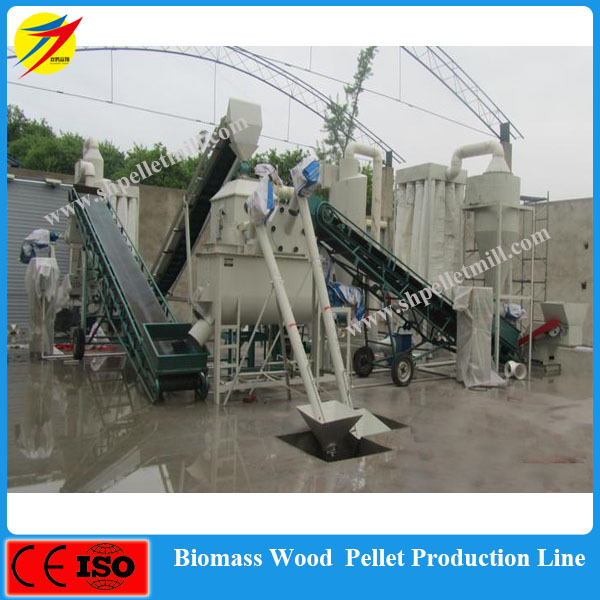Pellet Mill Process
Truckloads of raw materials are brought to pellet mills every day and can arrive in many different forms. Some of the raw material may be sawdust, wood chips, lumber mill scrap, and even full trees unsuitable for lumber. The raw materials may be green, or freshly cut, may be partial dry or even kiln dried. By processing these raw material all in the same way, the end product has consistent moisture content, heat value, ash content, and burn characteristics. It is very important that all pellet manufacturers produce pellet to the same standard so that pellet appliances burn and heat consistently. Here are some of the processes:
Chippers & Hammer Mills
Some pellet plants start their process by putting large pieces of wood through a chipping machine for processing. These are only necessary for mills that accept this non-uniform feed stock. There are many different configurations to pellet manufacturing plants depending on their raw material source. While they all don't have chippers, almost all of them have a hammer mill at the beginning of their milling process. These machines take sawdust and wood chips and break them down into a consistent smaller size, making drying and pressing through the pellet die quick and consistent.
Dryers
If a pellet mill uses fresh cut raw material, material exposed to the weather or high humidity, or a mix of raw materials that may contain moisture, they have to dry the sawdust to a consistent moisture level. Large dryer drums may use natural gas, propane, sawdust burners, or other fuels to heat the drum, driving off the extra moisture.
The Pellet Mill
After drying, the sawdust is pressed through dies at high pressure. This process causes the sawdust to heat up and release natural lignins in the wood that bind the sawdust together. The mill also determines the density of the pellet, the diameter, the durability, and the length. All of these characteristics are very important for consistent pellet appliance operation.
MZLH 420 wood pellet mill
Cooling and Storage
The pellets come out of the mill between 200 and 250 degrees and soft. A cooling tower is used to bring the temperature down and harden the pellets. After cooling, they are usually stored in a large silo to await bagging or bulk distribution.
Bagging or Bulk
The most common method for distribution in the US is to put the pellets into 40 pound plastic bags and stack them on pallets or skids. These skids may contain anywhere from one to one and a half tons of fuel, depending on the distribution channel. Bagging pellets adds between $25 and $30 per ton in plastic bags, pallet, outer cover bag, shrink wrap, and the labor and equipment to stack and wrap them. These skids are than shipped out and delivered all over the country for consumer pick up at retail locations or home delivery.
Bulk pellets are loaded from the pellet mill silo directly into trucks for delivery to bulk storage containers. The bulk trucks are more expensive than regular flatbed trucks, but a much more efficient system of processing, transfer, and delivery. In the US, there are very few residential bulk handling systems in use today.












没有评论:
发表评论